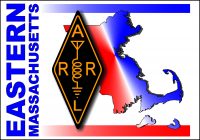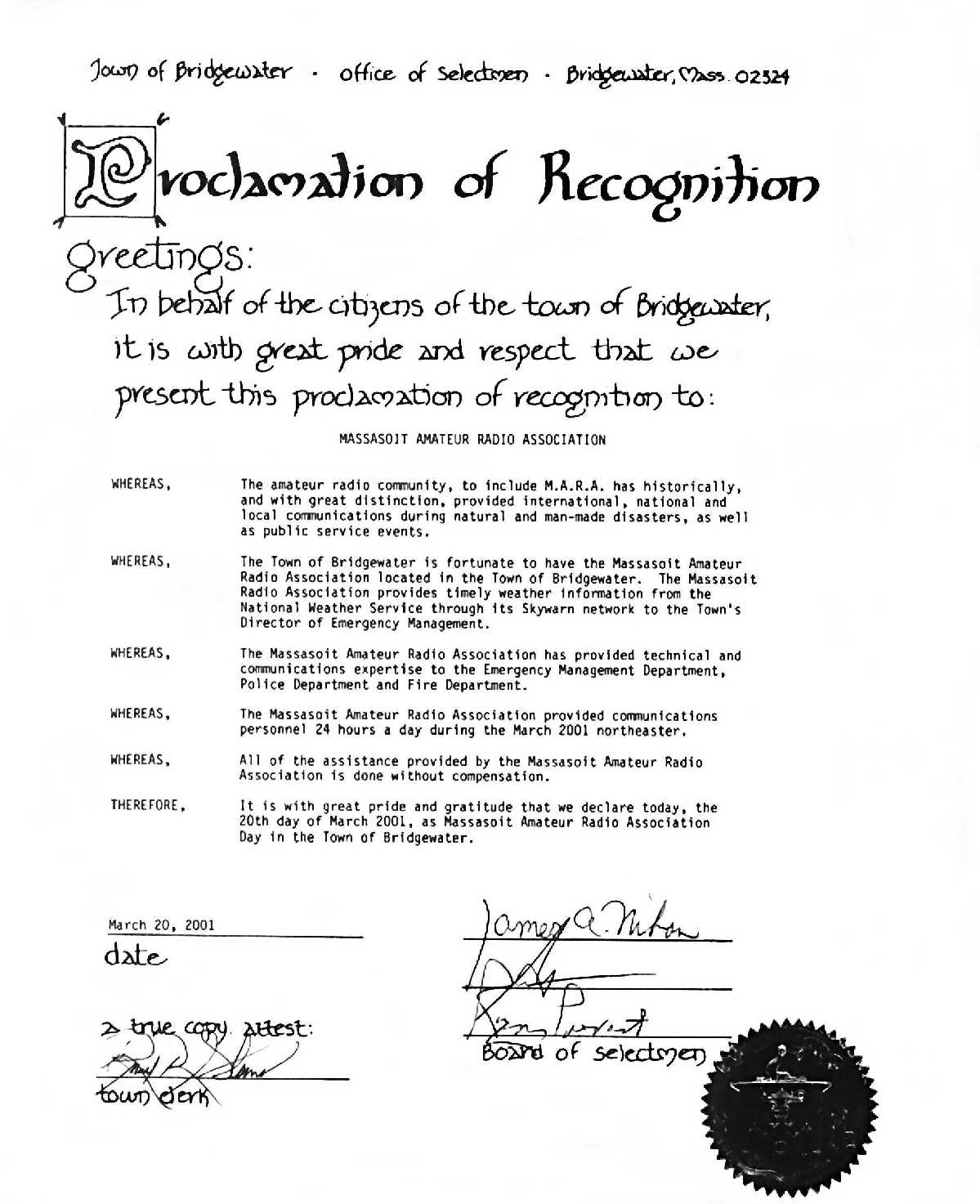Bridgewater Town of Selectmen Proclaim “MARA Day”
The Massasoit Amateur Radio Association was recognized by the Bridgewater Town of Selectman in a special proclamation on March 20. Noting the club’s “technical and communications expertise” to the emergency management department, police, and fire departments, they declared March 20, 2001 as “MARA Day.”


